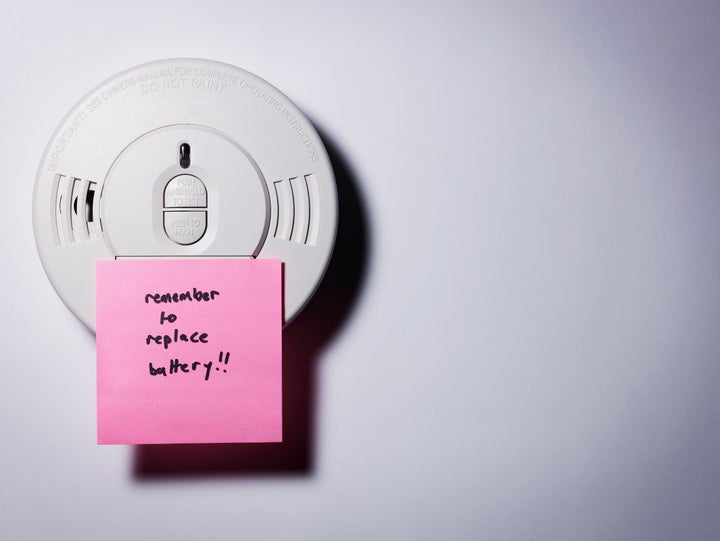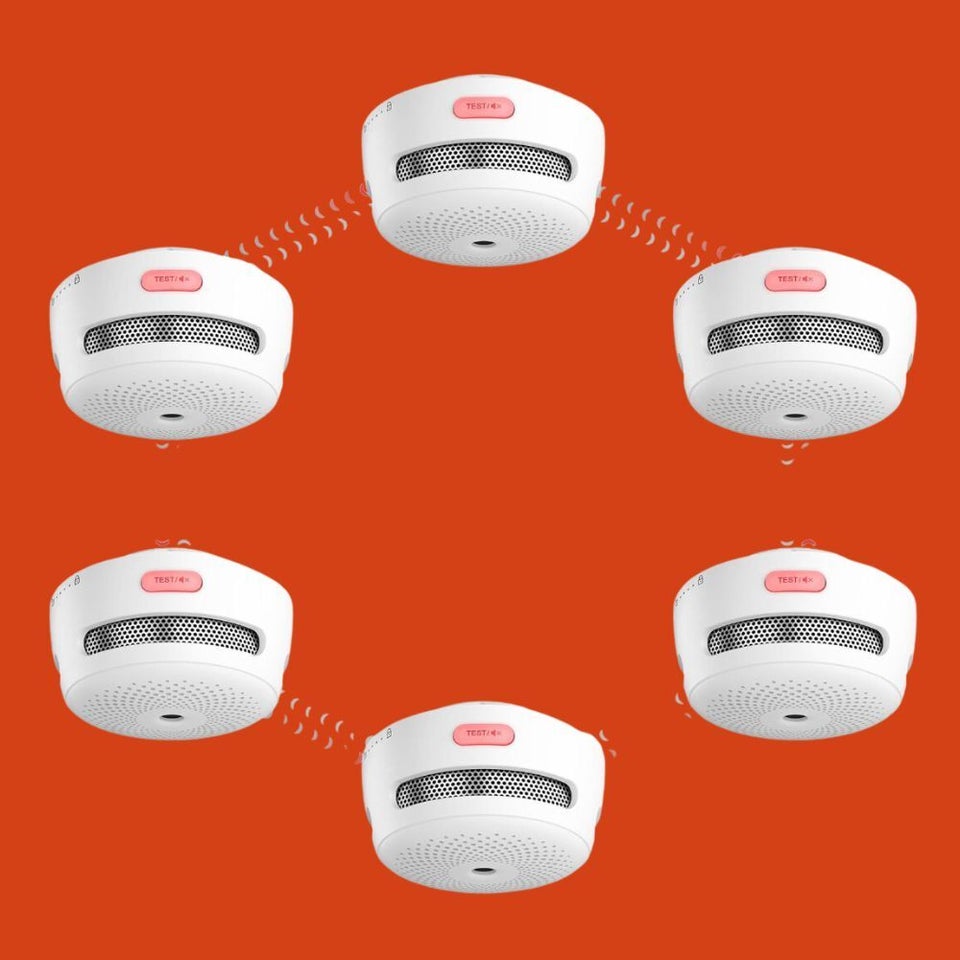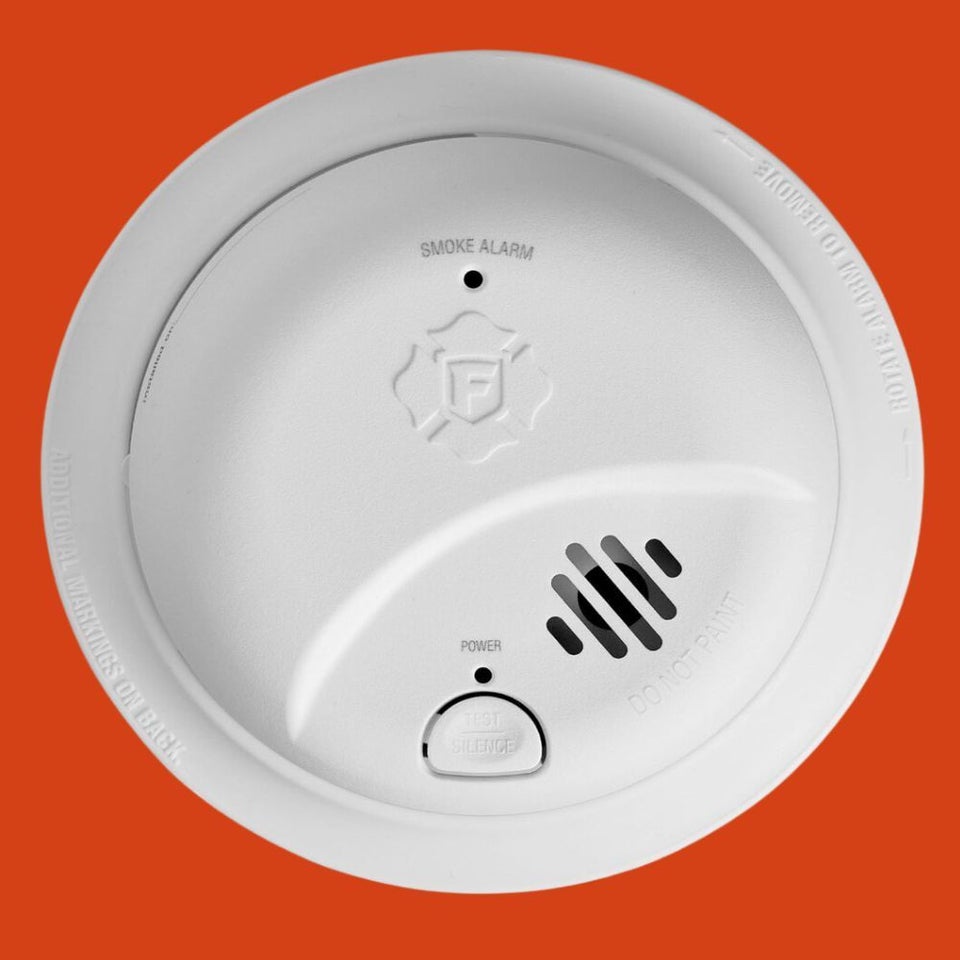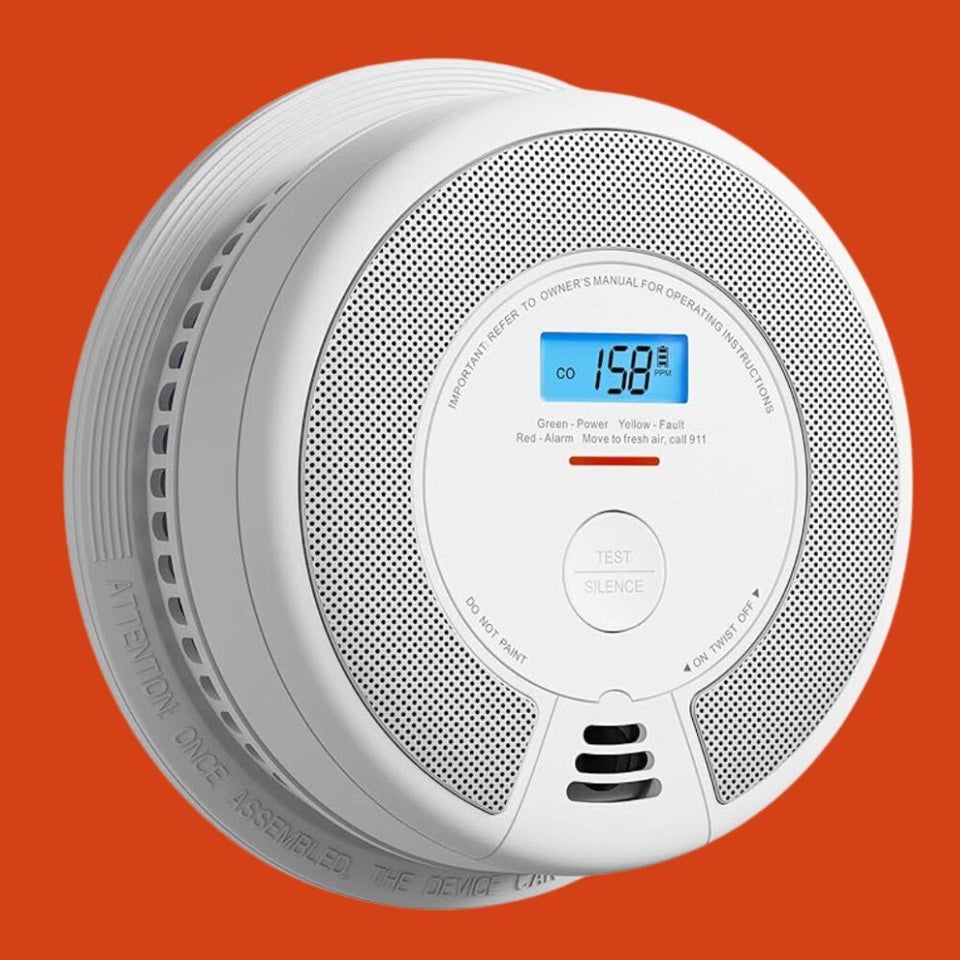The Home Safety Devices You Need To Update Routinely — It Could Save Your Life
A few weeks ago, we narrowly avoided a family tragedy. My niece and the other five members of her household — including a 10-month-old baby — were rushed to the hospital with carbon monoxide poisoning. Her home had CO detectors, which were in the house when she bought it, but they apparently were faulty. She now realizes she should have replaced all the CO and smoke detectors when they moved in.
We spoke with experts to find out which home safety devices you should immediately inspect and then routinely keep up. Here’s what they had to say.
Advertisement
Safety devices you should inspect — and possibly replace.
When moving into a home, you don’t want to risk spending even a single night in your new place until you’ve checked out some of the most critical safety devices.
“When we investigate fires where there are civilian fatalities, the No. 1 question we need to find the answer for is: Were there working smoke detectors?” said Andy Bozzo, battalion chief with the Contra Costa County Fire Protection District in California and co-founder of Tablet Command, an incident response and management software solution. “Having functioning smoke detectors that are strategically placed near sleeping and dwelling areas is imperative to a fire-safe household.”
Likewise, you should also have carbon monoxide detectors near sleeping areas and parts of the home where you spend a lot of time (ideally, at least one on each level of the home).
Advertisement
Of course, it’s not enough just to have CO alarms and smoke detectors in your home — they won’t do you much good if they aren’t working properly. They need to be maintained like any other piece of household equipment, Bozzo said, so you should inspect and test these devices before moving into a home (and routinely after that), but if you’re unsure of their age or condition, it’s best to replace them, just to be safe.
If your budget allows, the safest strategy is to just automatically replace all the safety devices in the home. “As a 28-year fire professional, that would be my impulse,” Bozzo said, but notes that you can evaluate each item individually. “Check each smoke detector for functionality and life span. If the detector is near the end of its life (approximately 10 years), then it’s best to opt in to more modern detectors. The same scrutiny should be applied to extinguishers and alarm systems; if they’re old, trade up.”
If you’re buying a home, be sure safety devices are reviewed during the home inspection.
A home inspection is often a standard part of a home purchase process. This inspection normally includes a range of safety systems and devices, but you can double-check to make sure they are reviewed. Maryann Bacharach, a Realtor at Howard Hanna Real Estate in Pittsburgh and a landlord for commercial and residential properties, said buyers should consider testing and/or replacing smoke detectors, carbon monoxide detectors, security system backup batteries and fire extinguishers. While these items typically aren’t mentioned at the point when the initial offer is made, “if it is discovered that the items are faulty during a home inspection, the buyers can negotiate and ask the sellers to replace items.”
Advertisement

ballyscanlon via Getty Images
The inspection should also encompass any systems that could create a CO risk. “I would ask the inspector to pay extra attention to older furnaces and chimneys to make sure they aren’t causing a carbon monoxide issue,” said Nick Gromicko, founder of the International Association of Certified Home Inspectors.
There’s another potential danger that many people don’t consider. “Regardless of whether the home has a radon mitigation system or not, I would have the home tested for radon,” said Gromicko, noting that radon is the leading cause of lung cancer in nonsmokers.
Advertisement
Gromicko also suggests having a monitored security alarm installed if the home doesn’t already have one. Many home security systems also can detect fire, carbon monoxide and flooding. Most newer homes have ground fault circuit interrupters (GFCIs) to prevent electrical shock and/or arc fault circuit interrupters (AFCIs) to prevent fires — but if your home doesn’t, Gromicko recommends having an electrician add them.
How to handle safety devices as a renter.
Bacharach said renters should ask landlords to install smoke detectors, carbon monoxide detectors and fire extinguishers and should test to make certain they are operating upon moving in. If the landlord balks at providing these items, check with your local fire department — in some areas, fire departments provide smoke detectors (and possibly other safety products) to residents for free.
Make ongoing inspections and maintenance of safety devices a standard routine.
Testing home safety devices is important to maintaining a safe living environment for yourself and loved ones in your home. “It might seem time-consuming, but taking half an hour to test smoke detectors, carbon monoxide detectors and fire extinguishers could save your life,” said Bacharach, who suggests setting a reminder on your phone to test these devices every few months. “If you have young children, get them involved by making it fun! Make a chart on a poster board and give them stickers for every device they test.”
Advertisement
Don’t forget about checking low-tech safety items, as well.
While you’re doing your home safety inspections, here are some other low-tech items Gromicko said you might also want to check (or have an inspector or contractor check):
- Electric stovetops where the “hot” indicator isn’t working or isn’t prominent. He says you might want to consider replacing it with an induction cooktop, which is safer.
- Ensure grab bars in the shower aren’t missing, loose or in poor condition.
- Make sure there is slip-resistant flooring in the bathrooms and shower.
- Look for any trip hazards along the path between the parking areas and the entrances to the home.
- Stair handrails should be both sturdy and graspable. Gromicko said spindles should be no more than 4 inches apart for child safety reasons. Also, the rises of each step should all be the same height, as different rises are a trip hazard.
Looking for reliable smoke detectors? These are highly recommended.
HuffPost and its publishing partners may receive a commission from some purchases made via links on this page. Every item is independently curated by the HuffPost Shopping team. Prices and availability are subject to change.
Advertisement
A dual photoelectric and ionization alarm
McKelvey shared that most smoke alarms fall under the photoelectric or ionization category.
“Ionization alarms are more responsive to flaming fires [whereas] photoelectric alarms are more responsive to smoldering fires,” McKelvey said. “Photoelectric smoke alarms are the best type of alarms to be installed near the kitchen and bathrooms to reduce nuisance alarms.”
This First Alert smoke and fire alarm offers dual-sensors, meaning it’s both photoelectric and ionization, and requires no hard-wiring, so it provides continuous monitoring even if there’s a power failure. With a 4.5-star rating on Amazon, this alarm allows users to test its function with just a push of a button and has a loud 85-decibel siren sound.
A highly popular ionization smoke alarm
This ionization-type detector, which is rated 4.6 out of 5 stars on Amazon, has a tamper-resistant design, wire-free installation and uses sensor technology that detects invisible fire particles. And if you hate replacing batteries, then you’re in luck, because it operates on a 10-year lithium battery and even detects smoke during power failure.
Note: Both Amazon and Home Depot carry these detectors but Home Depot seems like the better deal given that you get three there for the price of only two on Amazon.
Promising review: “I bought this to replace the same product whose battery life had come to an end. I love the fact that it has long lasting batteries and I don’t have to be changing batteries once a year.” — Edith St. John
A full-coverage interconnected alarm system
“For the best protection, use combination smoke alarms that are interconnected throughout the home. These can be installed by a qualified electrician, so that when one sounds, they all sound. This ensures you can hear the alarm no matter where in your home the alarm originates,” McKelvey said.
Each of these interconnected X-Sense alarms in this 6-pack system can be controlled via a remote so users don’t have to scale ladders and step onto chairs in order to mute an alarm. They promise what McKelvey calls multi-criteria technology — a sensing system that intuitively knows the difference between smoke from cooking and smoke from smoldering fires thanks to advanced photoelectric sensors.
Advertisement
A precision-detection alarm that doesn’t require battery replacement
This First Alert SMI110 smoke alarm also boasts the multi-criteria technology that McKelvey had spoken about earlier. It claims to be precise and compliant with new industry standards to reduce cooking nuisance alarms and provides early warning in the event of a home fire emergency.
It’s also powered by a sealed battery with a 10-year lifespan so you don’t have to replace batteries and will be notified when it’s time to get a new alarm.
Promising review: “No-hassle smoke detector. I bought this smoke detector mainly because of its 10-year battery; no more climbing up on the ladder to change out 9-volts, or listening to that annoying beeping because the battery is low.” — VHH
A combination smoke and carbon monoxide detector
This standalone combination alarm detects both smoke and carbon monoxide in the air and displays all vital readings and battery life on the light-up LCD screen. It’s fully battery-operated and built with a sealed lithium battery that provides 10 years of continuous power. There are also interconnected models available if you have a larger home or live with loved ones who are hard of hearing.
A smart Google Nest smoke and carbon monoxide detector
For a fully intelligent and multi-faceted detection system, you may be interested in the Google Nest Protect, an alarm that features a split-spectrum sensor that announces both smoldering and rapid-burning fires, as well as a sensor that detects carbon monoxide.
Seamlessly merging with Google Nest’s smart home operating system, you can have detection alerts sent directly to an app on your phone and hush alarms without having to lift a finger. Plus, when it’s time to change the batteries, the Protect will stop glowing green without any of that annoying chirping, though its battery system lasts for up to 10 years. It’s even been outfitted with a motion-detection night light that emits a soft glow whenever someone walks beneath it.
Advertisement
A photoelectric smoke detection set with voice alerts
This photoelectric smoke alarm set has a 4.6-star rating on Amazon and offers similar (but more affordable) smart functionality as the Google Nest option above. Equipped with helpful voice alerts, this interconnected alarm system (available in both a one-, three- or six-alarm bundle) alerts users with information like what room a specific fire is in, low battery and device malfunctions. You can also receive emergency notifications and have full alarm control directly from the compatible app on your phone.








Comments are closed.